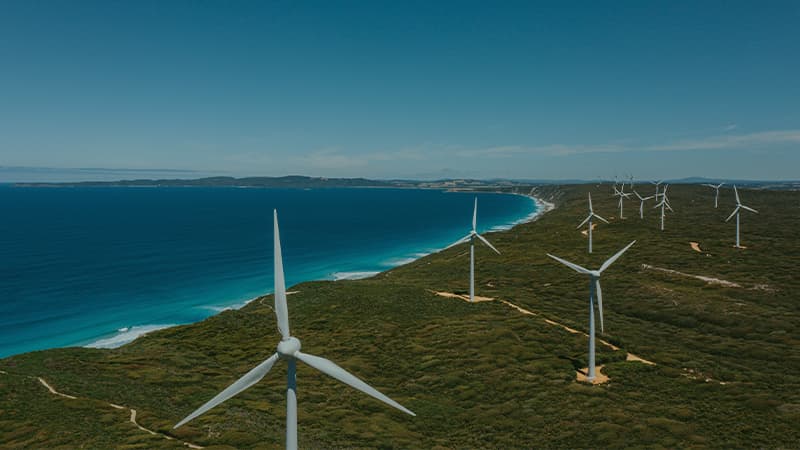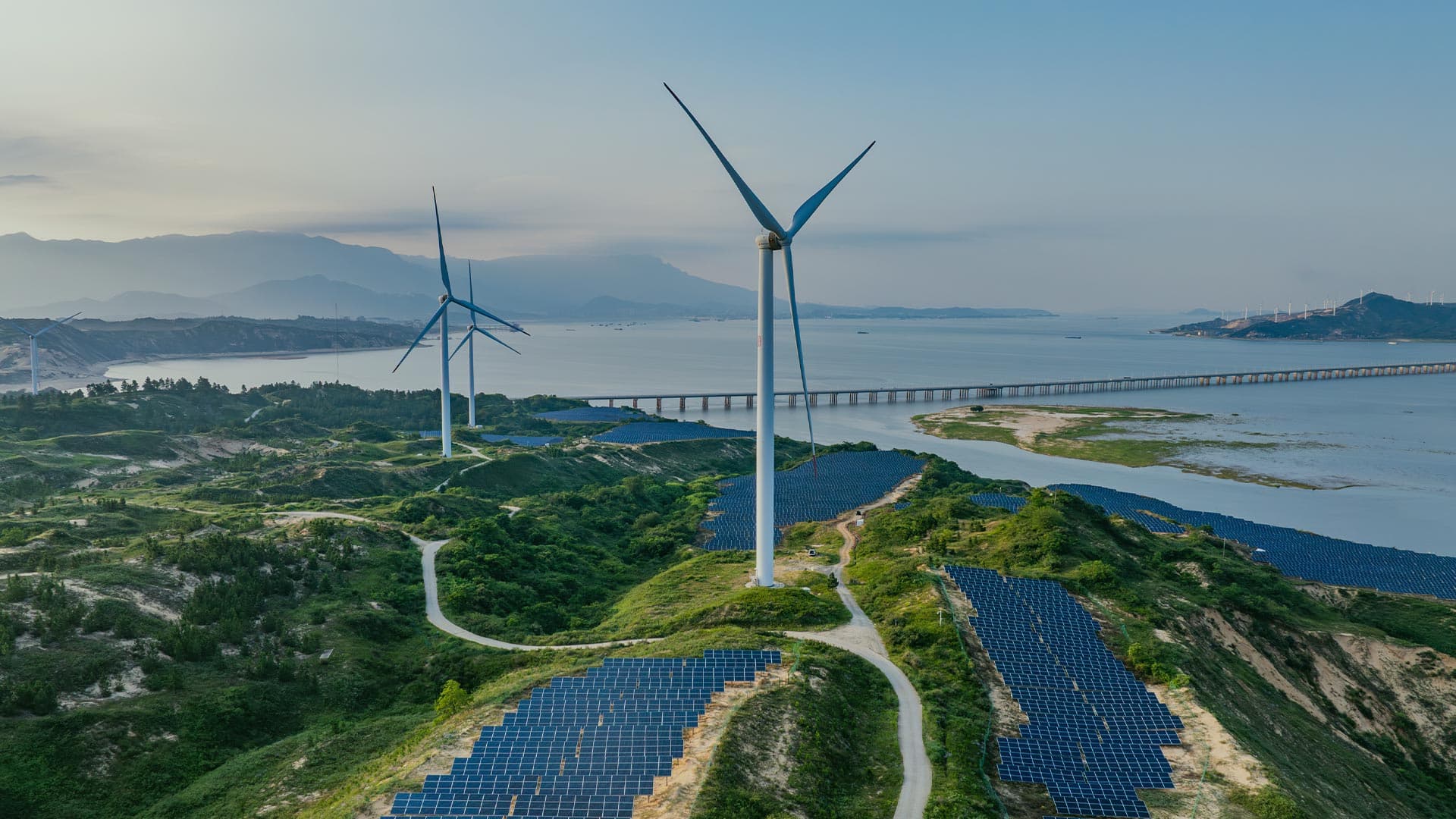November 2025Kayleigh Regan, Associate Director at LVI Associates
Can Australia Hit 82% Renewable Electricity?

Australia’s plan to reach 82% renewable electricity by 2030 is one of the most ambitious energy goals in the world. With renewables now providing 43% of national power, achieving that target in six years will test every part of the energy system.
The challenge isn’t just technological or financial. It’s human. At LVI Associates, we see daily that talent, technology, and funding must work together for the energy transition to succeed and without the right people in place, even the best-funded projects risk delay.
Why is the electricity renewables target so high?
Electricity generation is Australia’s largest source of emissions, making it the most important sector to decarbonize. A cleaner grid supports every other net zero goal, including transport electrification, low-carbon manufacturing, and green hydrogen production.
The target also reflects Australia’s position in a global energy race. European Union already generates more than 54% of its electricity from renewables, while the United States set a goal of 100% clean power by 2035, however, U.S. President Donald Trump has made clear he does not support this target, creating renewed global competition for energy investment and leadership.
Meanwhile, Japan and South Korea are accelerating investment in offshore wind and hydrogen. Setting a high target helps Australia stay competitive, attract private investment, and maintain relevance in a rapidly changing global market.
Despite record project announcements, renewable generation is currently projected to reach only about 46% by 2030 based on projects under construction or approved. Meeting the target will require roughly 100 terawatt hours of additional clean electricity, new transmission corridors, and major investment in energy storage to balance supply and demand.
The current state of Australia’s infrastructure
Australia’s power grid was designed for centralized fossil fuel generation, not the decentralized renewable network now emerging. The Australian Energy Market Operator (AEMO) estimates that $12.7 billion in new transmission investment will be needed this decade to connect renewable energy zones and maintain reliability.
Bottlenecks are already slowing delivery, with solar and wind projects facing long waits for connection approvals, while new transmission builds are competing for the same engineering and project management expertise.
Battery storage is central to resolving these constraints. Large-scale systems such as the Waratah Super Battery in New South Wales and the Victorian Big Battery are critical for stabilizing the grid as variable renewable generation increases. These projects also illustrate the delivery challenge. The skills required for high-voltage design, grid integration, and commissioning are scarce, and shortages in these areas directly affect construction timelines.
The regional competition for talent
Australia’s workforce challenge is part of a broader regional trend. Across Asia Pacific, governments are scaling renewable energy capacity at speed.
- Japan aims to install 10 gigawatts of offshore wind by 2030 and up to 45 gigawatts by 2040
- Singapore is expanding solar generation and large-scale battery storage while importing renewable power from neighbouring countries
- South Korea is building out hydrogen infrastructure and grid upgrades as part of its Green New Deal.
This acceleration has created a regional labour market for energy specialists, and engineers, project managers, and technical experts are moving across borders to meet demand. Many professionals now evaluate opportunities in multiple countries at once, therefore Australian employers need to move faster in hiring and provide clear, long-term project visibility to compete for talent.
Expert insight: Kayleigh Regan
Kayleigh Regan, Associate Director at LVI Associates, partners with renewable energy and infrastructure companies across Australia and the wider Asia Pacific region. Working closely with project developers, utilities, and investors, she has seen how workforce shortages and hiring competition are influencing project outcomes as renewable activity increases.
The energy transition has created a far more competitive hiring environment. Engineers, project managers, and technical specialists now have opportunities across multiple markets, which means employers need to act quickly when they find the right person. Companies that treat recruitment as a strategic part of delivery are the ones most likely to reach their targets. Success depends on timing and partnering with the right recruiter who understands the market and can move at pace. Australia has the project pipeline and investment to attract world class talent, but businesses must make decisions fast enough to secure the people who can deliver on the country’s renewable energy ambitions.
Beyond 2030: building a lasting energy workforce
Renewable electricity is only the first stage of Australia’s transformation. Once the grid is largely decarbonized, focus will shift to electrifying transport, scaling green hydrogen, and decarbonizing heavy industry. Each of these will create new layers of workforce demand and increase competition for skilled professionals.
The next decade will define Australia’s position in the global clean energy economy. Long-term workforce planning and leadership development will determine whether the country sustains its momentum or falls behind faster-moving markets.
A coordinated approach with LVI Associates
The 82% target is achievable, but it depends on coordination between government, investors, and industry to build and retain the workforce needed. Companies that plan early, communicate their project purpose, and create opportunities for career development will be best positioned to deliver projects on schedule and at scale.
At LVI Associates, we connect developers, EPCs, and utilities with professionals who make large-scale projects possible, from grid engineers and construction directors to battery specialists and system planners.
Our Energy & Infrastructure team has a track record of helping clients secure the specialists needed to keep projects on time and on budget. We understand the specific challenges facing Australia’s renewable sector and have an extensive network of professionals across Asia Pacific and globally.
Partnering with us gives you:
- Access to a deep, local and international talent pool across engineering, project management, and infrastructure delivery
- Market insight into current salary trends and candidate availability
- Support in building long-term workforce strategies that reduce turnover and protect delivery timelines
- A dedicated partner who moves quickly and understands how to engage high-demand professionals in competitive markets
Build the team that delivers the transition
If your organization is scaling renewable or infrastructure projects and needs specialist talent, request a call back from our energy & infrastructure team here to discuss your hiring priorities. Secure the professionals driving Australia’s clean energy future today.


